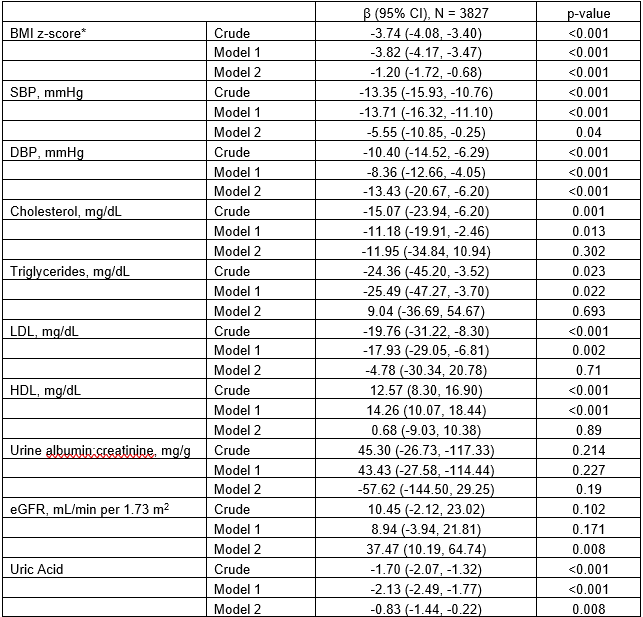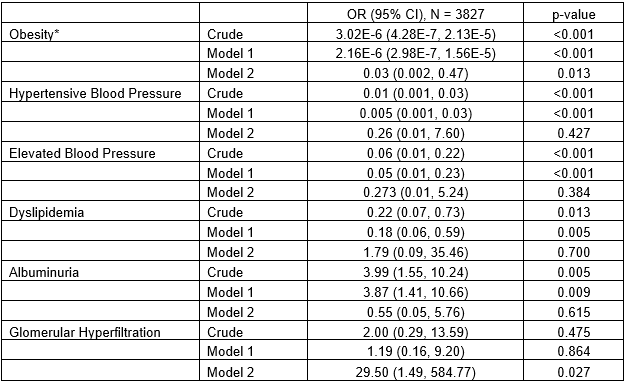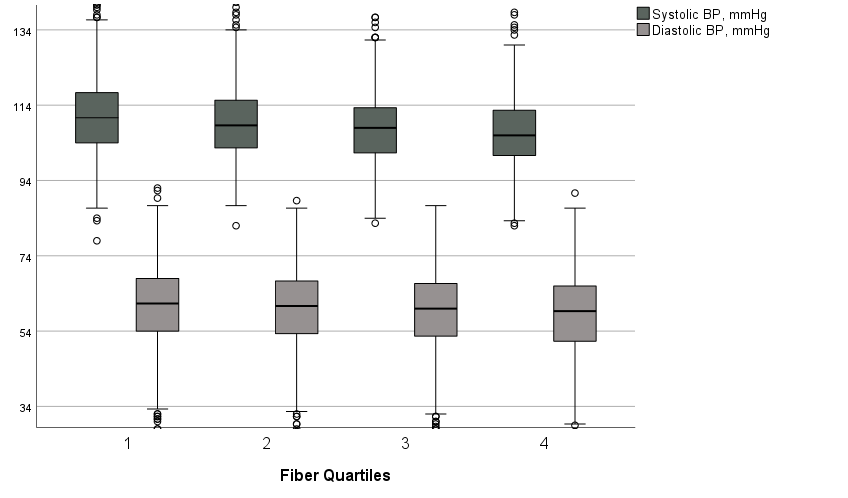Hypertension
Hypertension 1
1 - Association Between Dietary Fiber Intake and Cardiometabolic Risk Factors in Adolescents in the United States
Sunday, April 30, 2023
3:30 PM - 6:00 PM ET
Poster Number: 1
Publication Number: 1.321
Publication Number: 1.321
Johnathon Carboni, Donald and Barbara Zucker School of Medicine at Hofstra/Northwell, West Babylon, NY, United States; Christine Sethna, Cohen Children’s Medical Center, New Hyde Park, NY, United States

Johnathon Carboni, BA (he/him/his)
Medical Student
Donald and Barbara Zucker School of Medicine at Hofstra/Northwell
West Babylon, New York, United States
Presenting Author(s)
Background: Previous studies have associated higher dietary fiber intake with decreased incidence of chronic disease and improved cardiometabolic markers in adults. However, this association has not been well-studied in children.
Objective: To determine the association between dietary fiber intake and markers cardiometabolic risk (blood pressure, lipids, glucose intolerance, proteinuria, uric acid) in adolescents.
Design/Methods: Participants aged 13-17 in NHANES 2009-2018 who completed a 24-hour dietary recall survey were included. Exclusion criteria included: pregnancy, being born small for gestational age, and history of major health co-morbidities. This resulted in a final cohort of 3827 participants for analysis. The independent variable of interest was dietary fiber intake (g) assessed by two 24-hour dietary recall interviews. The values from the two days were averaged and adjusted for body weight. Dietary fiber intake (g/kg/day) was examined as a continuous variable as well as divided into quartiles. The primary outcome of interest was BP, secondary outcome measures included other established markers of childhood cardiometabolic risk, including: obesity, lipids, albuminuria, glomerular filtration rate (eGFR), and uric acid. Data were analyzed using complex samples adjusted statistical tests in SPSS version 28 (IBM Inc.). Logistic and linear regression models were used to analyze the cross-sectional association between dietary fiber and cardiometabolic markers. Regression models were adjusted for age and sex in model 1, and model 2 included the addition of race, total daily caloric intake, family poverty income ratio, food insecurity status, passive smoke exposure, and BMI z-score along with the variables of model 1.
Results: The mean age of participants was 15.0 years, with a gender distribution of 50.4% male and 49.6% female. The population identified as 14.5% Mexican-American, 6.6% other Hispanic, 14.1% non-Hispanic Black and 55.3% non-Hispanic White. In fully adjusted regression models, low dietary fiber intake was significantly associated with elevated systolic blood pressure (β = -5.55, 95% CI -10.85, -0.25), elevated diastolic blood pressure (β = -13.43, 95% CI -20.67, -6.20), higher BMI z-score (β = -1.20, 95% CI -1.72, -0.68), and elevated uric acid (β = -0.83, 95% CI -1.44, -0.22).
Conclusion(s): This study found significant associations between low dietary fiber intake and poor childhood cardiometabolic risk markers. Further research in to using fiber intake as a dietary intervention in childhood as a tool for prevention against chronic conditions is warranted.



